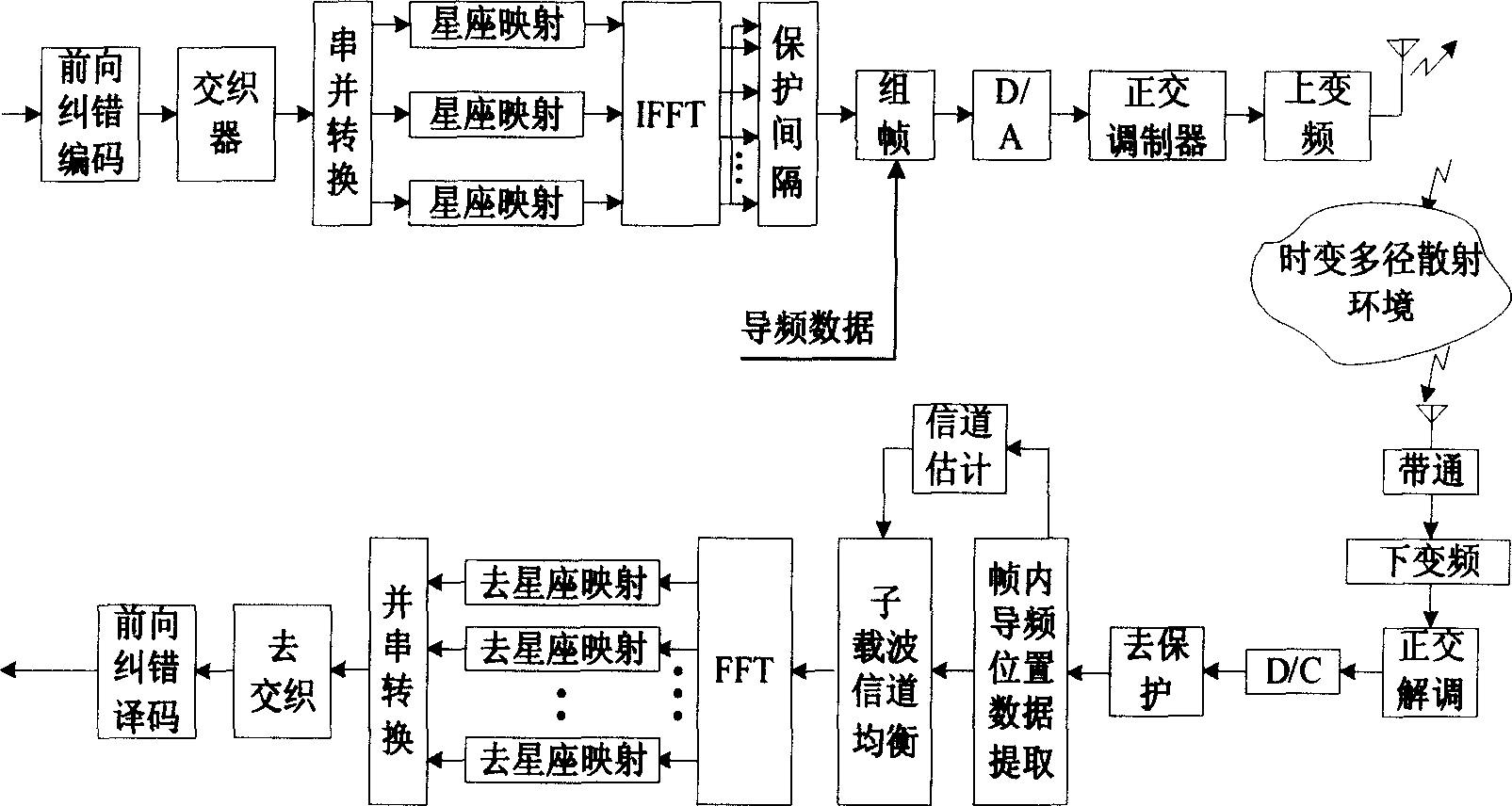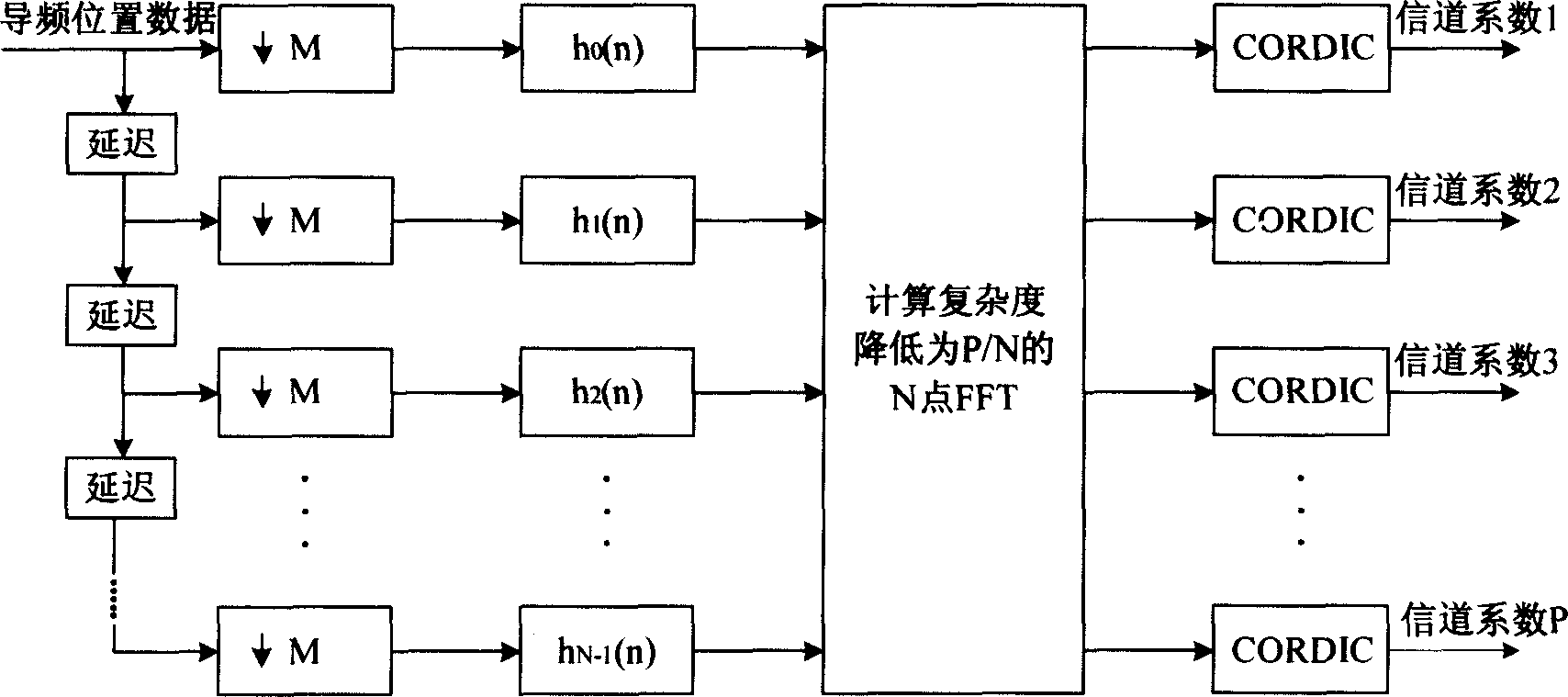Channel estimating method for high-speed moving orthogonal frequency division multiplying system
An orthogonal frequency division and channel estimation technology, applied in the direction of baseband system components, etc., can solve the problems of reduced receiver complexity, impractical wireless applications, poor accuracy, etc., to achieve good adaptability, simple equalization process, and low calculation effect of complexity
- Summary
- Abstract
- Description
- Claims
- Application Information
AI Technical Summary
Problems solved by technology
Method used
Image
Examples
Embodiment Construction
[0030] Such as figure 1 As shown, firstly, the data to be transmitted is processed by hybrid forward error correction coding and interleaving, and then constellation mapping (16QAM), IFFT spectrum shifting, and guard interval processing are performed, and the obtained data and pilot data form a data frame. After digital-to-analog conversion, quadrature modulator, and up-conversion, it is transmitted. The received signal first passes through a band-pass filter, and then undergoes down-conversion, analog quadrature demodulation, and analog-to-digital conversion. After de-guard interval processing, the data at the pilot position in each frame of data is separated from other transmission data. Next, send the data at the pilot position to the channel estimation unit in the present invention. After channel coefficient extraction and time-frequency bidirectional linear interpolation, the entire channel matrix is obtained, and then the effective data is divided by the channel coeff...
PUM
 Login to View More
Login to View More Abstract
Description
Claims
Application Information
 Login to View More
Login to View More - R&D
- Intellectual Property
- Life Sciences
- Materials
- Tech Scout
- Unparalleled Data Quality
- Higher Quality Content
- 60% Fewer Hallucinations
Browse by: Latest US Patents, China's latest patents, Technical Efficacy Thesaurus, Application Domain, Technology Topic, Popular Technical Reports.
© 2025 PatSnap. All rights reserved.Legal|Privacy policy|Modern Slavery Act Transparency Statement|Sitemap|About US| Contact US: help@patsnap.com



